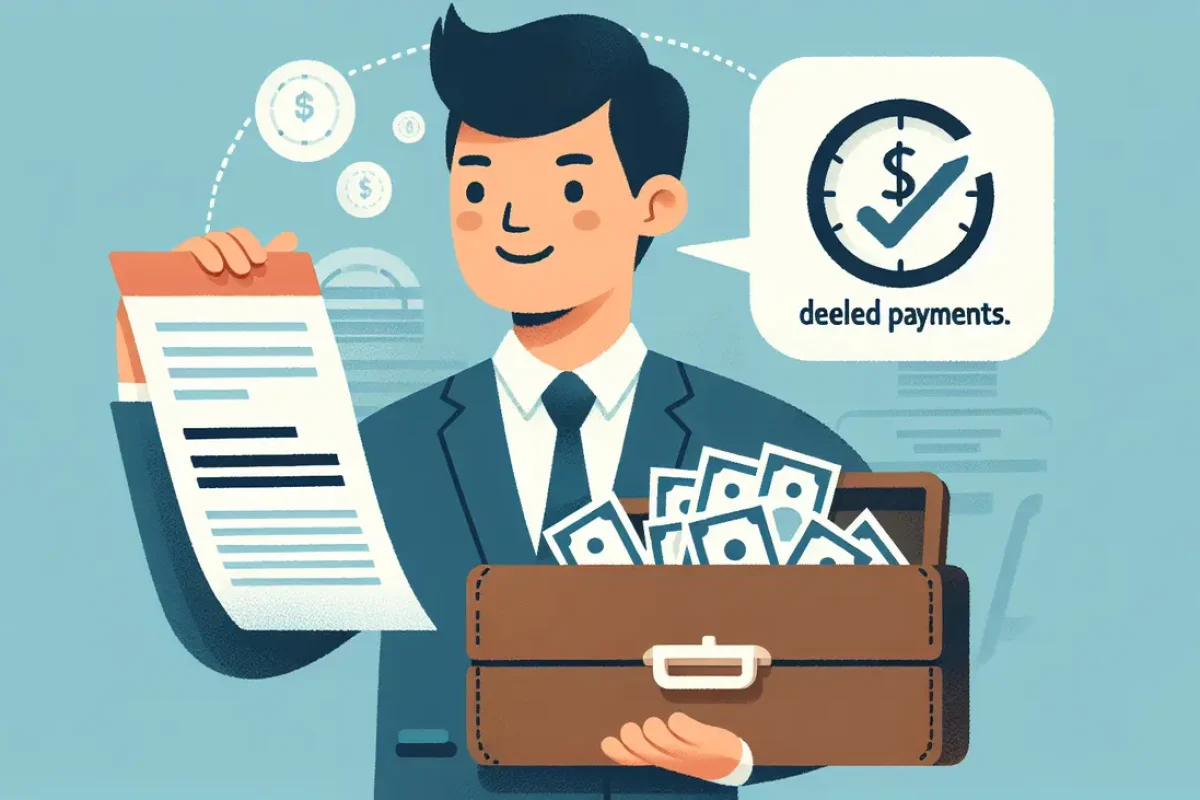Recovering business debts efficiently is crucial for maintaining financial stability and ensuring steady cash flow. In this blog, we’ll explore simple and effective strategies to enhance your business debt recovery process today. These tips are designed to help you minimize outstanding debts and improve your financial outcomes in a friendly and approachable manner.
1. Understanding Your Client’s Financial Situation
Understanding your client’s financial situation involves more than just numbers. It’s about gauging their ability to pay and determining the likelihood of timely repayments. Initiate open dialogues to learn about any potential roadblocks they may face financially. Understanding these aspects can help tailor a recovery approach that fits both their needs and your business’s requirements. This comprehensive view not only aids in debt recovery but helps maintain a healthy business relationship, centering on empathy and mutual goals.
In addition to direct communication, using background checks and credit histories can provide deeper insights. A credit check offers a snapshot of their financial habits and can predict future behaviors. While these might seem intrusive, they’re critical tools for assessing risk. Educate your clients about why such measures are employed—it’s not just about safeguarding your interests but ensuring a fair, informed dealing on both sides. With these insights, you can work collaboratively to design feasible payment plans that encourage timely settlements and reduce potential for defaults.
2. Setting Clear Payment Terms
When setting clear payment terms, specificity is your ally. Ensure every detail is articulated—from deadlines and acceptable payment methods to penalties for delays. Clients appreciate knowing what’s expected of them, and this lucidity mitigates disputes later. A contract that includes transparent terms acts as a reference point for both parties and provides legal protection in case of disagreements. Make these terms an integral part of your discussions right from the get-go. Doing so solidifies an understanding that debt recovery starts with well-defined agreements.
Incorporate these terms into your digital invoicing platform as well. This not only standardizes the process but ensures that each invoice aligns with your agreed terms, establishing consistency across your client interactions. Consider discussing these terms not only during onboarding but as a part of regular business reviews with your client—this keeps the terms top of mind and reinforces financial discipline. Moreover, verbal confirmation of understanding during initial negotiations can pave the way for smoother financial dealings and adherence to agreed terms.
3. Building Strong Client Relationships
Building strong client relationships is fundamental to effective debt recovery. Trust forms the backbone of any business interaction, particularly in financial dealings. By investing in the relationship beyond transactions, you build rapport and encourage collaboration. Regular check-ins can keep communication flowing and concerns addressed before they escalate into major issues. Aligning on common values and objectives can also solidify loyalty and integrity, laying the ground for timely payments and smooth resolution of any financial hiccups.
4. Implementing Automated Payment Reminders
Automating payment reminders can transform the debt recovery landscape for your business. Automated systems can manage due dates and notify clients when payments are approaching or overdue. This lessens the administrative tasks for your team and ensures no invoice goes unnoticed. Automated reminders serve as quiet nudges that maintain focus on financial obligations without straining client relations. Plus, using personalized templates can keep the tone friendly and supportive, further preventing any possible friction that could arise due to perceived impersonality.
Explore solutions that integrate with your existing invoicing or accounts system, creating a seamless flow of information without additional manual input. Offering multiple channels for reminders—emails, SMS, and perhaps calendar notifications—caters to varying client preferences and increases the chances of payments being made on time. Reflect on how tailor-made these interactions feel to your client; a friendly reminder embedded with a personal touch often goes a long way in maintaining both a professional image and client satisfaction.
5. Offering Incentives for Early Payments
Incentives for early payments provide a win-win scenario for both your business and clients. By introducing small discounts or bonuses, you motivate clients to prioritize your invoices, effectively improving cash flow. Structure these incentives carefully to balance rewarding punctuality with financial sustainability for your business. For instance, a 2% deduction might encourage more timely payments without significantly impacting your profitability. Communicate these incentives clearly during contract discussions and reiterate them gently in follow-ups, reinforcing your commitment to rewarding timely financial behavior.
6. Utilizing Legal Resources Wisely
Legal resources should be navigated carefully in debt recovery. No business desires its financial matters to escalate to legal proceedings, but knowing the correct course to take when conditions demand is crucial. Before approaching the court, exhaust all available options—such as settlements or payment plans. Legal intervention should serve as a protective measure rather than a scare tactic. Ensure that any communication on potential legal action is articulately conveyed, emphasizing it as the last step after collaborative efforts fail.
7. Training Your Team on Effective Communication
Effective communication is a skill that can be learned and honed, and when it comes to debt recovery, its importance cannot be overstated. Training your team to communicate with empathy, professionalism, and clarity will make debt recovery interactions more productive and less confrontational. Regular workshops or role-playing exercises can prepare them for various scenarios. Focus not only on verbal communication but also on non-verbal cues and written correspondence, as these are critical in maintaining and nurturing client relationships. Such preparation ensures your team can handle tough conversations proficiently while preserving the relationship and encouraging clients to honor their financial commitments.
8. Monitoring Debtor Behavior and Trends
Monitoring debtor behavior allows you to remain proactive rather than reactive. By tracking changes such as payment delays or partial payments, you can adjust your approach to address potential issues early. Utilize analytics tools to observe patterns and identify at-risk accounts before they default completely. This proactive stance enables your team to prioritize efforts according to risk and potential impact. By refining your approach based on real-time insights, you can better tailor your debt recovery tactics, thus ensuring they’re both effective and respectful.
9. Setting Up a Flexible Payment Plan
Establishing a flexible payment plan can enhance your debt recovery process by allowing clients experiencing financial stress to meet their obligations without defaulting. These plans must be clearly structured, with achievable milestones and incentives for adherence. Transparency in terms and communication is key—clients should feel supported rather than pressured during discussions of their plan. Regularly reviewing these plans equips both parties to assess performance and make necessary adjustments, ensuring the client can remain committed to honoring their debt while preserving the crucial business relationship.
10. Reviewing and Adjusting Your Strategy Regularly
Regular review and adjustment of your debt recovery strategy ensure that your processes evolve with an ever-changing business landscape. Schedule periodic assessments to evaluate how effective your current methods are and to identify any emerging challenges. Gather feedback from your clients and team members to inform these strategies—often, the best insights come from those directly involved in the process. By incorporating ongoing learning and improvements, you’ll develop a dynamic debt recovery system that adapts and thrives amidst growing or shifting industry demands.







